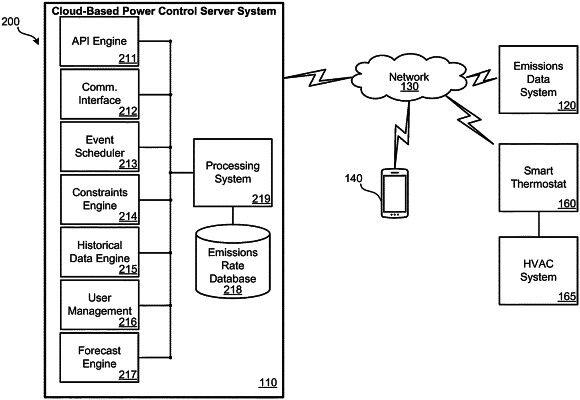| CPC F24F 11/47 (2018.01) [F24F 11/58 (2018.01); F24F 11/62 (2018.01); F24F 11/64 (2018.01); F24F 2110/10 (2018.01); F24F 2110/65 (2018.01); F24F 2140/60 (2018.01)] | 20 Claims |

|
1. A method for performing an emissions demand response event, the method comprising:
receiving, by a cloud-based HVAC control server system, an emissions rate forecast for a predefined future time period;
determining, by the cloud-based HVAC control server system, using the emissions rate forecast, an emissions differential value for each of a plurality of points in time during the predefined future time period, thereby creating a plurality of emissions differential values, wherein the emissions differential value represents a change in emissions over time;
generating, by the cloud-based HVAC control server system, based on the determined plurality of emissions differential values and a predefined maximum number of emissions demand response events, an emissions demand response event having a start time and an end time during the predefined future time period; and
causing, by the cloud-based HVAC control server system, a thermostat to control an HVAC system in accordance with the generated emissions demand response event.
|